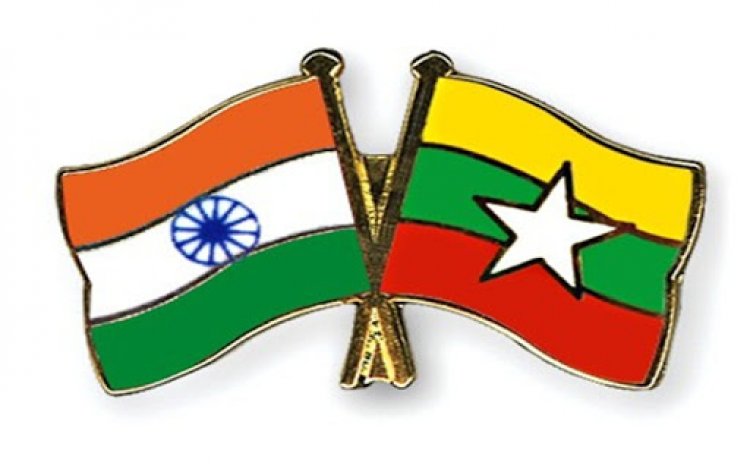India - Myanmar: India’s Dilemma
Asia News Agency Editorial Board

Ambassador TS Tirumurti, India’s Permanent Representative to the United Nations General Assembly in New York, signaled the government’s changing position on the Myanmar crisis, moving to a more pro-active stand as concerns grow worldwide about growing internal strife and instability there.
After a closed-door UNSC meeting on Myanmar, Tirumurti’s tweets condemned the violence, condoled the loss of lives, called for the release of detained leaders and urged maximum restraint. In his social messages, significantly, he said that the situation must “meet the hopes and aspirations of the people” and underlined India’s commitment to a democratic transition. There was a line about supporting peace efforts by the Association of South East Asian Nations (ASEAN, of which Myanmar is a member). However, ASEAN has been tentative, even timid, in the face of China’s support to the junta. Bagchi was more unequivocal: “Let me be very clear … We believe that the rule of law should prevail. We stand for the restoration of democracy in Myanmar.”
The language, writes Sanjoy Hazarika (writer and commentator on issues of NE India and its neighbourhood; currently director of the Commonwealth Human Rights Initiative) “is the bluntest so far by India on Myanmar and a response to criticism of its earlier stand within and outside the country. This marks a welcome departure from the tightrope walking by befriending the military (which has not always been friendly to India’s interests) and engaging with the civilian government, which held office only for five years…”
India’s concerns: restoring democracy and refugees
India’s concern says Hazarika “should be two-fold: One, the people of Myanmar, who, having tasted freedom of expression, assembly and association for the first time in decades under Suu Kyi, are determined to hold on to it……The second is the future stability and security of the North-east as well as the policies that have been emphatically espoused at the highest levels of government — the Act East and Neighbourhood First policies are anchored in the eight states of the North-east. We also cannot forget that various insurgent groups from the North-east have a history of relations with ethnic armed groups in Myanmar, where they have taken shelter and established bases and where some still live.”
Arunachal Pradesh, Nagaland, Manipur and Mizoram — have long borders with Myanmar and the last two states have taken some 1,500 persons, including a number of junior police officials, fleeing from the crackdown in the bordering Chin State. While the Centre has been advising the states on the border not to allow Myanmar nationals fleeing the crackdown to enter Indian territory, Mizoram Chief Minister Zoramthanga has said that his government will accept people fleeing, on humanitarian grounds.
The Manipur government, too, has withdrawn its circular which had asked district officials along the border to “politely” turn back refugees. What many in the country need to understand, writes Hazarika “is that the Chins in Myanmar and the Mizos and Kukis (and sub-groups) in Mizoram and Manipur are kin; a historical affinity connects them by ethnicity, religion, language. In the aftermath of the 1988 army crackdown on the pro-democracy movement, which killed thousands, many Chins and other refugees fled to Manipur and Mizoram. Local leaders and non-government groups, with the tacit support of central and state agencies, allowed them to live, work and even settle. They were seen as the eyes of India to look through the window on the border into Myanmar and help develop a nuanced field assessment of conditions there. This approach needs to continue.
“The present situation provides an opportunity for India to develop a long-term approach to the issue of refugees fleeing political persecution in their homelands. India does not have a National Refugee Law nor is it a signatory to the UN Convention governing refugees.”
The military may have miscalculated this time
At another level, there are reasons to believe that this time round, the Myanmar military may have miscalculated its ability to frighten ordinary citizens into abject submission. In fact, writes Shyam Saran (former Foreign Secretary and Senior Fellow, Centre for Policy Research) “the barbaric violence indulged in by the security forces has led to greater outrage and anger and a determination not to submit to such repression.
“There is another important difference from the past similar instances. Politics in Myanmar works through a ‘three-legged’ dynamic, the military, the mainly Burman civilian political constituency and the 17-odd ethnic groups, some of which are heavily armed. If two legs come together, the remaining leg will come under intense pressure. In the early 1990s, when the military overturned the results of elections which were also won by the National League of Democracy (NLD), it managed to neutralise the various ethnic groups by concluding ceasefire or arms for peace agreements with them conceding a high degree of autonomy to them in their respective regions. The Chinese who had maintained strong links with some of these groups located in the China-Myanmar border, such as the Wa and the Kokang, helped the Myanmar military in negotiating such agreements. This time, several of the ethnic groups have shed their reservations about the NLD and the leadership of Aung San Suu Kyi and are joining in the popular protests against the military. Clashes between the ethnic armed forces and the Myanmar military are growing. It is estimated that these ethnic armed forces may number at least 1 lakh. If two legs of the stool come together, the military will find itself under great pressure……….”
















